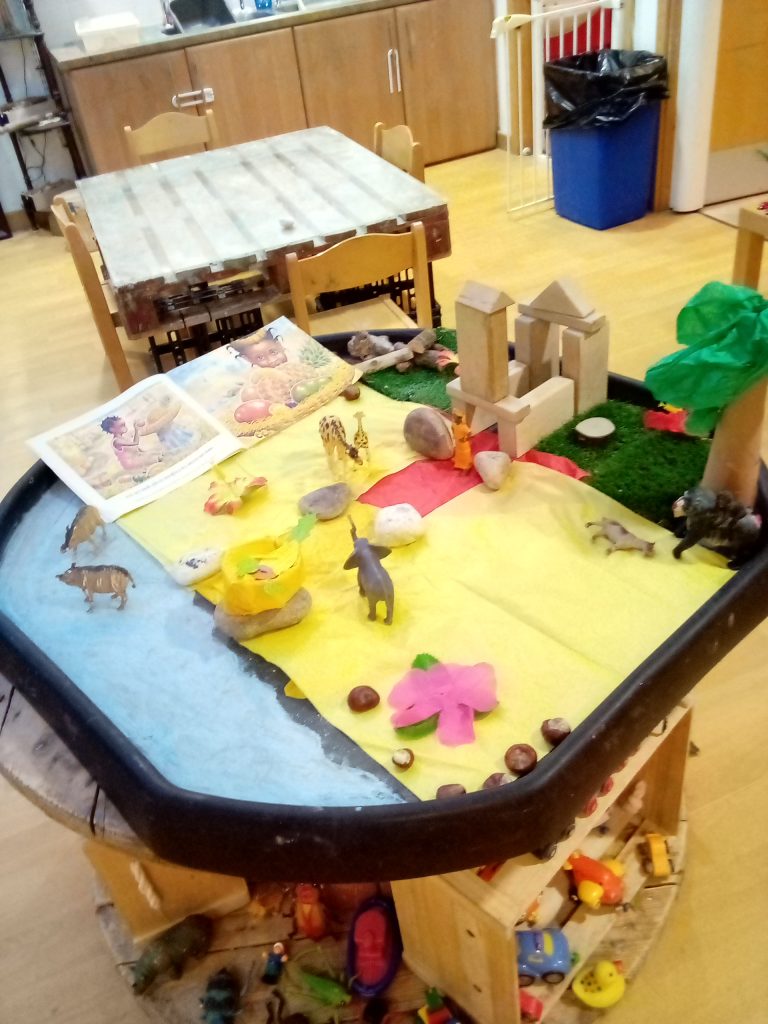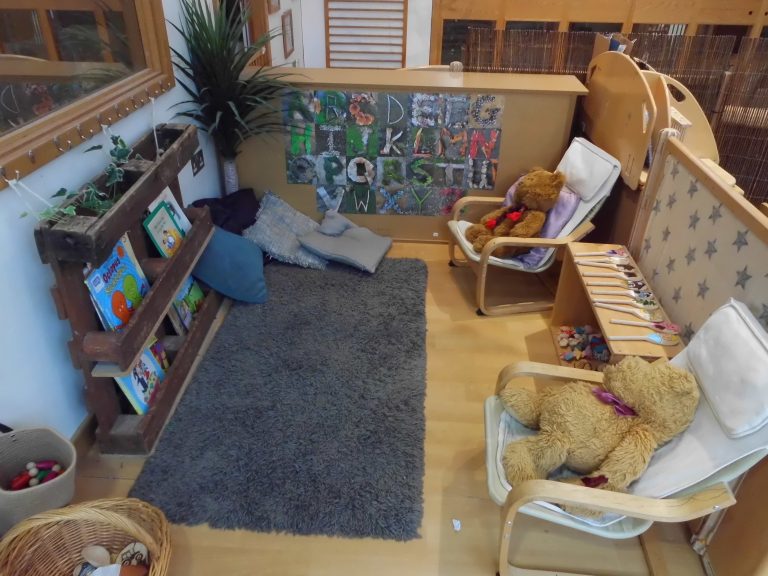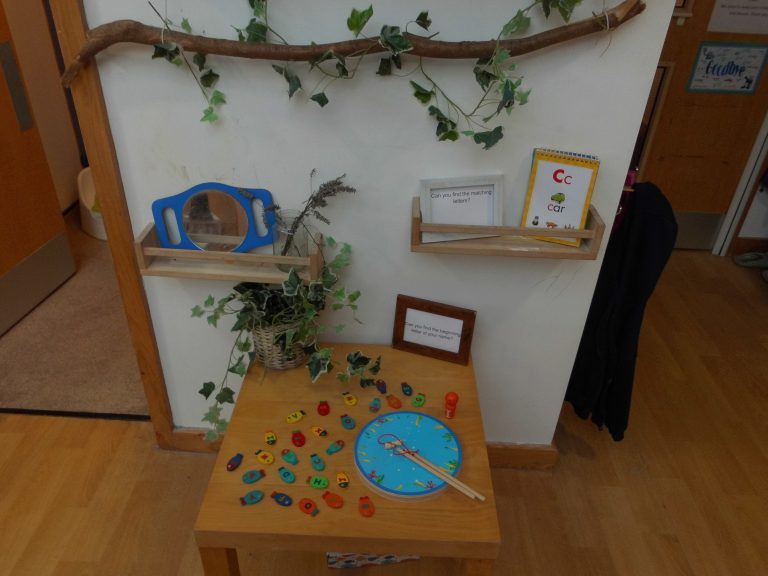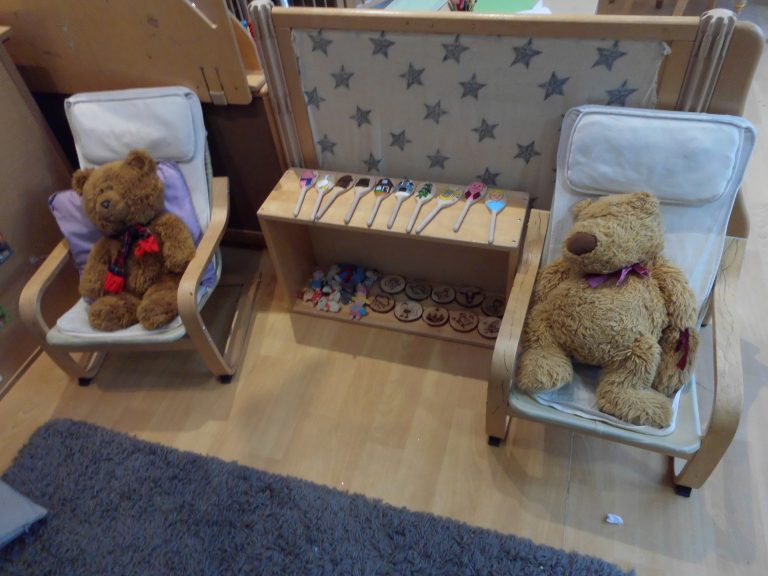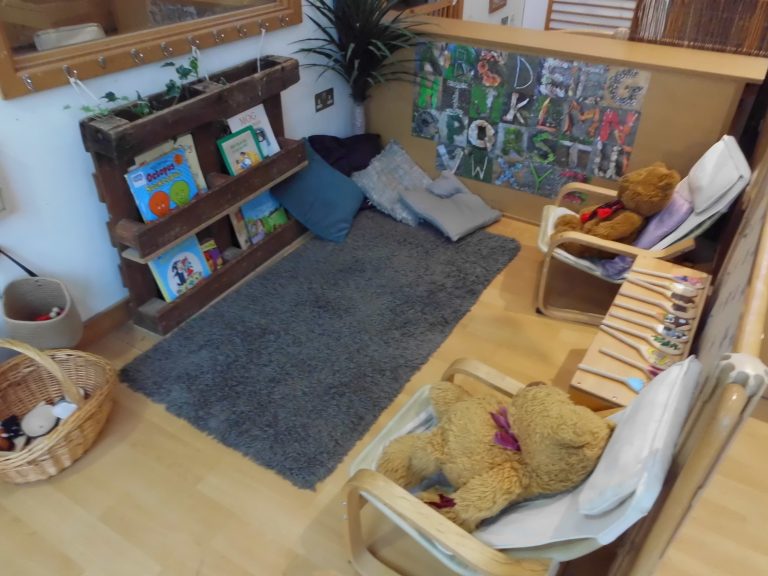As an Early Years Implementation Lead, I initially spent time collating information and evidence to accurately diagnose the specific challenges to children’s literacy & numeracy development, within my EY setting. Throughout this process I observed the children, colleagues and daily practice within the room. I reviewed our tracker information to identify areas that we could improve to further support children’s maths and literacy skills. I produced questionnaires for staff measuring their numeracy and literacy teaching confidence levels, to create a baseline to help measure progress throughout the project. This highlighted the following:
- Staff’s lack of confidence and own knowledge of how to implement Mathematics within Early Years
- Staff using limited and repetitive Mathematical language and staff not always recognising when there are opportunities to support mathematical learning working with the child or the environment. Mathematics present either from the child or within the learning environment. Witnessed through observations
- Children’s tracking progress and attainment – the vast majority of children were in the expected or exceeding band at the end of summer term July 2021. However, there was small percentage that were emerging. These are the children that we need to support and to help narrow the gap and prevent that percentage by the end of next summer term, particularly EYPP in maths.
- We need extend the range of genres in literacy to meet the requirements of the new ELG to teach a range of literacy and not just popular children’s stories – poems, rhymes etc.
- We need to implement and extend activities and improve children’s learning outcomes by challenging their thinking by providing new and exciting awe and wonder play around mathematics and literacy
- To extend home learning opportunities in both areas to make parents more aware of our expectations around mathematics and literacy and to improve their own confidence in teaching their children.
Based on this evidence, I wrote and redrafted a Securing Achievement action plan with feedback from an Evidence Lead in Education, based within the local Research School. I put this action plan into practice in the setting which included:
- EYIL to research appropriate and extensive training opportunities via Suffolk CPD and Noodle Now
- Peer observations to focus on maths and literacy for the next 2 terms
- EYIL to run the next available staff meeting to introduce this plan and the focuses
- EYIL to research and purchase appropriate resources to support this project
- EYIL to identify (half termly) alongside key persons, tracking data, Wellcomm assessments etc who needs extra support and run intervention groups in both maths and literacy on a Mondays – Wednesdays.
- All staff to give children maths and literacy opportunities within their group times daily
- Staff to hold professional discussions with their colleagues to challenge their thinking around maths and literacy and to reflect – EYIL to lead, role model and allow time for staff to do this
- The EYIL will support staff with their activities, carry out peer observations and offer any training and support necessary.
- The EYIL will lead on supporting families with home learning and improving their confidence and skills plus intervention groups.
- Staff will complete maths training and literacy training to help guide the earning opportunities that they provide children but also to help improve their own knowledge and confidence.
- Used part of the £2,000 grant to purchase resources to support children’s early maths and literacy skills
- Ensured that maths and literacy opportunities were present in all areas of the setting, including a new cosy corner literacy area with puppets, wooden story spoons, wooden story slices and a natural alphabet on the wall
- Created borrow bag resource packs to be loaned to families including literacy and maths activities
- Changed the books available on a weekly basis
- Used part of the £2,000 grant to buy in training for all staff in the setting for a literacy course and a numeracy course
Within my role as an EYIL, I completed a comprehensive training programme with the IOA project including sessions on the following: principles of effective implementation, drafting action plans, early communication, SEND, supporting children’s early reading/writing, parental engagement, evaluation, improving children’s behaviour and supporting children’s early numeracy.
After completing training, I communicated key learning and best practice back to other staff in setting, during staff meetings and also shared the recorded videos on the Early Years Implementation Lead padlet, when I felt they would be beneficial. I regularly shared project plans and advice about how we could implement each strand through staff meetings and peer support, in the room. This enabled me to successfully cascade learning to other practitioners and colleagues, to help them to better support children’s literacy and numeracy development.
Being part of the EYIL project has really helped our setting to focus on maths and literacy. It was a great way to reflect upon daily practice, look at what our setting offered and identify effective ways to make improvements. I focused our numeracy and literacy activities around our children’s interests, which kept their focus and concentration maintained. The outcomes from these focused activities have shown improvement in the children’s maths and literacy skills.
